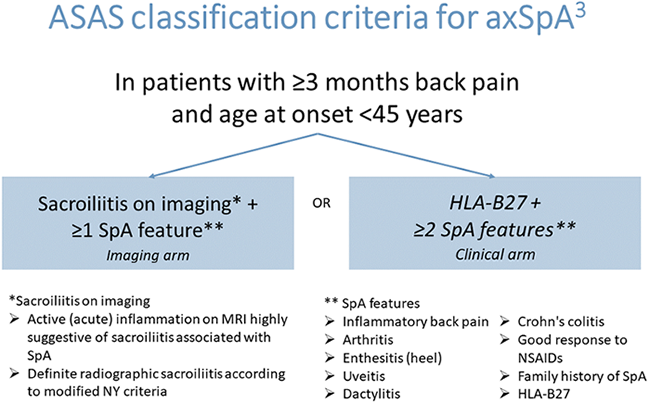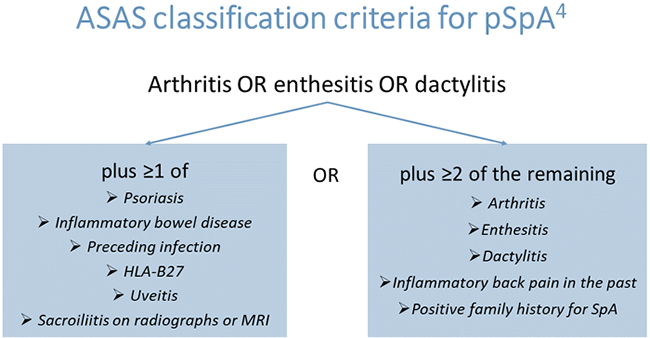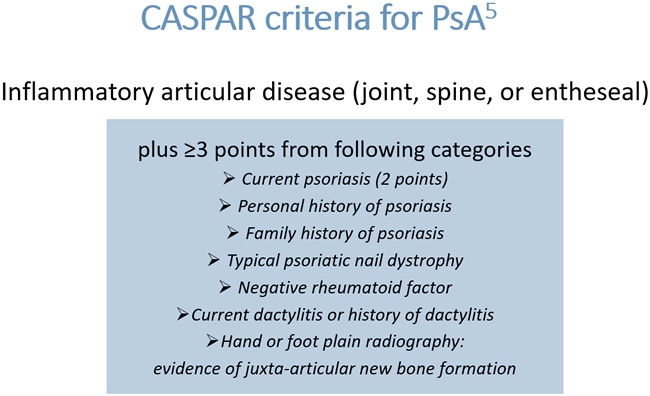Classification criteria
AxSpA classification criteria
After the creation of the term ankylosing spondylitis (AS) in the early 1900s, the first classification criteria of AS were described in 1961, called the Rome criteria.1,2 in these first criteria, radiographic sacroiliitis was incorporated as important part. The modified New York criteria, published in 1984, combined radiographic sacroiliitis with the newly described concept of inflammatory back pain (IBP). However, early disease without definite sacroiliitis on radiographs remained undetected with these criteria. New imaging modalities indeed demonstrated that the inflammation leading to structural changes at the SIJ can be detected years before the first radiographically visual damage.3 The European Spondylarthropathy Study Group (ESSG) and Amor criteria described for the first time AS as part of the SpA spectrum.2 The Assessment of SpondyloArthritis international Society (ASAS) group proposed the term axial spondyloarthritis (axSpA) for this spectrum, while peripheral SpA was chosen to describe the spectrum of SpA diseases with peripheral skeleton involvement. In the axSpA classification criteria, they proposed a subclassification into a clinical arm and imaging arm, based on appearance of SIJ abnormalities on MRI/X-ray.3 (See figure)

Peripheral SpA classification criteria
While the ESSG and Amor criteria took into account the entire SpA spectrum, also including peripheral SpA, the ASAS group first developed criteria for axSpA.3 The ASAS classification criteria for peripheral SpA were described subsequently, starting from patients with peripheral arthritis, enthesitis AND/OR dacytlitis.4 These symptoms typical for peripheral SpA combined with more than 1 or 2 other parameters could define the target population with high sensitivity and specificity.

Specific classification criteria were also developed for PsA in particular, like the Moll and Wright and the Bennet criteria.5 The CASPAR (Classification criteria for Psoriatic Arthritis) criteria were described in 2006, consisting of established inflammatory articular disease with at least 3 points of specific features.

It is important to note that these classification criteria serve mainly the purpose to enroll appropriate patients into clinical trials.2,5 They are not developed for diagnostic purposes in individual clinical encounters and inappropriate use can lead to overdiagnosis in clinical practice.
- Sieper and van der Heijde (2013) Arthritis Rheum 65:543-51
- Garg et a (2014) Best Pract Res Clin Rheumatol 28, 663-72.
- Rudwaleit et al. (2009) Ann Rheum Dis 68(6):777-83.
- Rudwaleit et al. (2011) Ann Rheum Dis 70(1):25-31.
- Taylor et al. (2006) Arthritis Rheum 54(8):2665-73.
